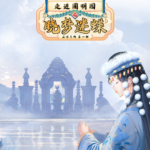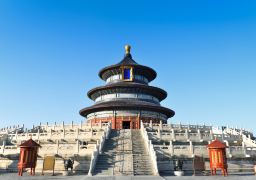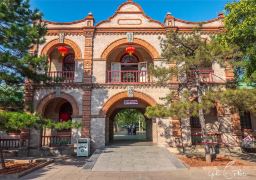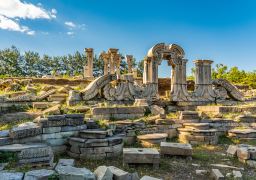The Yangxing Hall, Leshou Hall, and Yihe Pavilion are arranged in sequence to the north of the Ningshou Palace. After Emperor Qianlong became the Retired Emperor, he mainly resided here, and Empress Dowager Cixi also lived here after her sixtieth birthday. Among the three halls, the Leshou Hall is the most magnificent. The interior decoration uses Nanmu wood wrapped with rosewood and huali wood, adorned with jade and enamel, exuding an air of elegance and luxury.
In the center of the north hall, there is the Yu Zhi Shui Tu jade mountain, a massive jade carving in the collection of the Palace Museum. The corridor walls outside the hall are embedded with ‘Jingsheng Studio Calligraphy Collection’ stone carvings, which are the imperial copies of famous calligraphy works and classic quotes by Emperor Qianlong. Currently, these three palaces have been converted into the Palace Museum Treasure Gallery, which houses an especially rich collection of treasures, including Buddhist items, jewelry, daily utensils, and rare collectibles. These treasures are mostly made from precious materials such as gold, silver, jade, jadeite, pearls, and various gemstones, and were designed and manufactured by renowned craftsmen from different regions. The craftsmanship represents the high level of the time, with great effort and ingenuity. Notable items include a 14 cm tall red coral lion and a 17.5 cm tall gold ‘Fengtian Zhi Bao’ seal, both rare treasures. Opening hours are 08:30-17:00 from Tuesday to Sunday from April 1st to October 31st; closed all day on Mondays; 08:30-16:30 from Tuesday to Sunday from November 1st to March 31st; closed all day on Mondays; 08:30-17:00 on Qingming Festival, Labor Day, Dragon Boat Festival, Mid-Autumn Festival, and National Day; 08:30-16:30 on New Year’s Day and Spring Festival.Palace Museum Treasure Gallery
The Yangxing Hall, Leshou Hall, and Yihe Pavilion are arranged in sequence to the north of the Nings[...]









